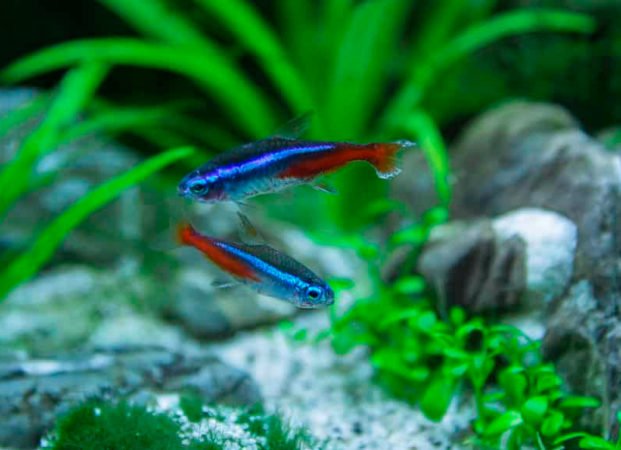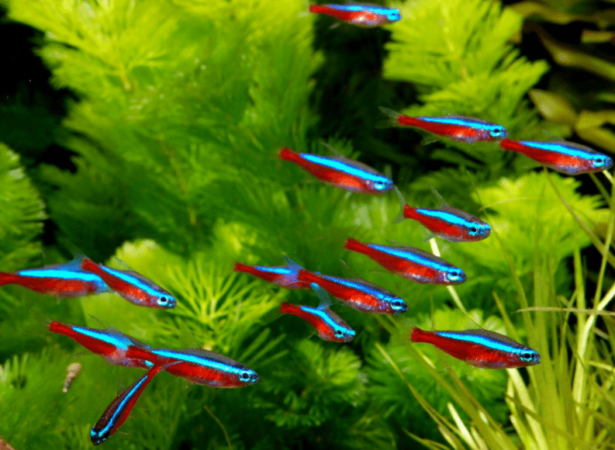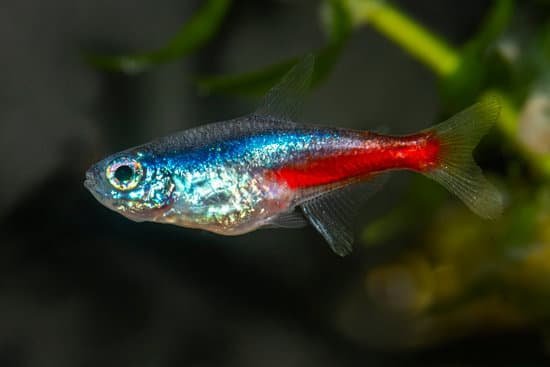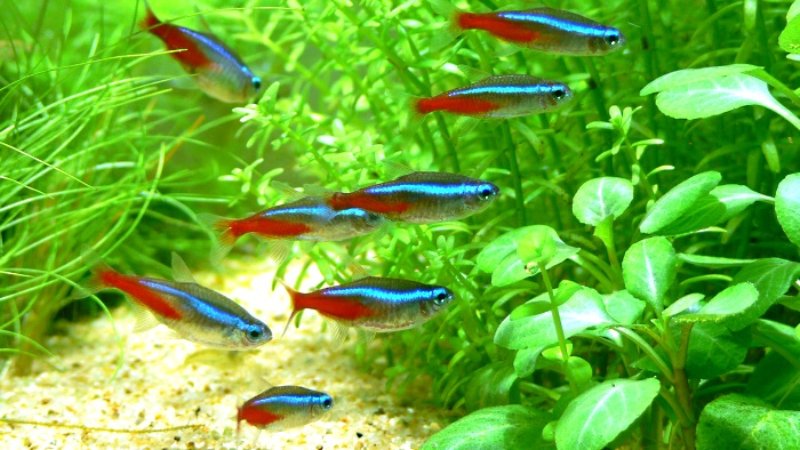How to keep Neon tetras alive is the question that tetras lovers ask before filling their tanks with more. After investigating and testing the theory, I have resumed the 5 most standard methods to ensure that these beautiful fish stay alive and live their full average lifespan. Check out my tips, and your gorgeous Neon tetras will stay healthy for over 3-4 years.
How To Keep Neon Tetras Alive? – 5 Ways To Do So

I find these 5 methods to be the most effective for keeping Neon tetras alive. You can adapt whichever you find fortunate with your tetras’ health and the tank conditions. Hopefully, this helps you determine how to keep neon tetras alive.
Not Feeding Them Too Frequently
The overfeeding of fish is one primary reason for the loss of fish. Overfeeding causes the accumulation of waste from unfinished food and increased quantities of waste generated by fish eating more food than the recommended amount. Unwanted food items and fish waste can cause numerous issues like water contamination and diseases.
Most tetras will be content when fed twice a day. Feed them more frequently, divide the food into many small sections and spend your time doing it after a few hours. But, a smaller amount is preferable. If you give them too much food too frequently, it will be highly toxic for Neon tetras.
The rule of thumb is to feed them what they will eat within four to five minutes. If they don’t eat it within five minutes, the leftover will go to waste and become a “poison” for the water parameters.
Choose A Big Tank But Keep More Than 6 Tetras Together

Like other fish species, Neon tetras also prefer a spacious living environment. But, since they are schooling fish, they prefer living with numerous members of their kind. When tetras are kept in smaller numbers than 6, they exhibit behaviors like being moody, sick, or “lonely.”
Therefore, it’s recommendable to school over 6 Neon tetras simultaneously in at least a 15-gallon tank. 10-gallon tanks are quite cramped for a school of Neon tetras. Also, it’s hard to observe this breed’s schooling behavior or swimming pattern in such a limited space.
Check Ammonia Level
If we do not maintain the cleanliness of our aquariums, it can lead to an increase in ammonia levels within aquariums. Ammonia is deadly to neon Tetras and many other fish species, especially goldfish.
Food waste, dead fish, broken filters, etc., are common reasons bacteria buildup exists. The bacteria in the water make it poisonous due to ammonia production. This ultimately results in the deaths of Neon tetras.
Not Keeping Them With Larger Fishes
Big fish swallow small fish. This is part of nature. When we keep Neon tetras, which grow up to 2 inches maximum, with bigger fishes like goldfish, swordtails, or angelfish, chances are your Neon tetras will become food for other giant tank mates. Or, in a less severe case, they will receive some bullying behavior from other fishes.
So, how do we avoid it? All we have to do is not keep mixed species of different sizes with Neon tetras.
On the other hand, Neon tetras feed on their young, a common phenomenon within the kingdom of aquarium fishes. To keep the young tetras alive, we must separate them from the adults with a different tank or a protective net.
Clean The Tank Often
It is recommended to do a water change of 25% at least every 2 weeks. Once a week would be even better. Remove any algae over the tank, in the filter, or even from the décor.
If you have food that is not eaten leftover after a meal, then remove as much as feasible using a siphon or fine mesh. No matter the size of the filtration device, it was not made to fix all the problems caused by feeding too much, which is obviously why an aquarium becomes dirty so quickly.
How To Know When A Neon Tetra Is About To Die
4 clear signs indicate that your Neon tetras aren’t healthy and may die soon. Keep in mind that it is possible to salvage the situation with some adjustments in the water parameters.

Ich Or Fin Rot
Ich is a parasitic illness that imposes a significant threat to the health of your Neon tetra. Fish with ich are covered in white spots that resemble salt on their tails, bodies, and fins. The bodies of their victims also need to receive friction against hard surfaces to alleviate itching.
Neon Tetras living in water that is not sanitary are more at the risk of becoming afflicted with fin and tail rot. The disease starts near the ends of the caudal or dorsal fins and then progresses to the fish’s body, leading to the fins becoming frayed and ragged.
Using salt and antibiotics is recommended in this situation.
Frequent Hiding
When your fish hide more frequently under greens or inside decor, the buddies may be experiencing a high level of stress or are being bullied by other tank members. If the situation continues, they can die prematurely. The best way to avoid the worst outcome is the separate them into a safer and independent tank.
Color Loss
Stress or illness can cause aquarium fish to display their worst coloration, and they could even change colors due to stress. In addition to disease, poor water quality, excessive cleaning of your tank, overly aggressive fish, inadequate nutrition, being introduced into a new school of Neon tetras, and other situations can cause stress.
Weird Swimming Pattern
Neon tetras that are sick often exhibit irregular swimming patterns. You can determine why they’re showing odd swimming patterns only when you have enough time to watch over them. The irregular patterns suggest that the fish is stressed and could be dying soon.
Normal neon tetras move around the aquarium in a uniform flow. However, the dying neon tetras might be twitchy or jerk as they swim. It swims in circles and can also flicker while swimming.
A sick tetra also tends to swim more often near the surface or at the bottom of the tank. This is alarming because this breed consists of mid-swimmers, which means they prefer the water body’s pressure right in the middle of the tank. Swimming frequently outside of it is a sign that indicates that Neon tetras are uncomfortable or are hiding from something,
FAQs
Are neon tetras easy to keep alive?
Neon tetras are simple to raise, however, we need to remain patient while adapting them into the tank. They are sensitive to changes in water’s parameters and maybe the water that stores use to ship fish isn´t the same as the one we use in the aquarium.
Do neon tetras need a heater?
Neon tetras live in 75° to 80° F water, therefore they need a heater to survive. Aquarium heaters are among the most important tools and equipment for Neon Tetra temperature balance. Most of the day, your aquarium’s temperature may reach the desired range, but that’s not enough for neon fish during winters or cold days.
Do tetras like bubbles?
Bubbles appeal to tetras because they are playful. They tend to be around bubbles most of the time. If you are thinking of buying a piece of deco that releases bubbles, I believe that your Neon tetras will enjoy it.
Video: Neon Tetra Care And Information – How To Keep Neon Tetras

Annette M. Chaney is an experienced marine biologist with over 20 years of experience as an aquarist and fishkeeper. She started her first aquarium at a young age, filling it with frogs and goldfish obtained from the ten-cent pet store.
Annette grew up caring for and breeding African Cichlids, which led to a hobby in high school that doubled as a profitable means. Attending Reed College gave her time to solidify herself as an accomplished aquarium caretaker with an eye for sales. After that, from 2009 – 2013, she studied at Roger Williams University – one of the most prestigious universities for Aquaculture and Aquarium in USA. She is the founder of AquariumCircle since 2010.
